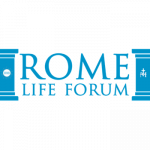Written by Maria Madise
Originally published on Voice of the Family
12 January 2024
Just before Christmas, on 18 December, the Catholic world was shaken by Fiducia supplicans, a declaration of high magisterial rank, issued by the Dicastery for the Doctrine of the Faith (DDF). The document was signed by Victor Manuel Cardinal Fernández, the new prefect of the DDF, and co-signed ex audentia by Pope Francis. Whether this document, which allows Catholic clergy to bless couples living together outside of Christian marriage — including homosexual couples — in certain non-liturgical settings, was received favourably or with alarm, it loomed large in the news over Christmas. Insightful commentaries have already been written (for example by Edward Feser and Roberto de Mattei) and no doubt there will be more in the coming weeks and months, as the implications of the document are better understood. Already strong and new voices of resistance to the revolution in the Church, including entire bishops’ conferences, have been raised against such blessings — many from Africa, suggesting that the pope of the peripheries has miscalculated the peripheries rather badly, but also bishops of Poland, Hungary, Kazakhstan and elsewhere. As the evident errors of Fiducia supplicans are considered, the challenge before us is to return to the fullness of the truth about Catholic moral teaching on marriage and the family.
The damage that the document will inevitably do has already been well summarised by others. First, it will affirm people in sin and deny them the genuinely pastoral care that would offer an opportunity to transform their lives. It is neither charitable nor merciful to hide from people the truth about their spiritual state when this deprives them of the motivation to turn away from a life of sin that threatens to cut them off from God for all eternity. Secondly, it further weakens the authority of the Church by creating the type of disunity seen in those Protestant denominations in which the application of doctrine varies from one minister to another. There will be an ever-deepening divide between the “nice priests” who bless same-sex couples and the “rigid priests” who refuse such blessings. To the liturgical nomads looking for a more reverent Mass, there will be added moral nomads looking for a parish where such occasions of scandal are avoided, and others still looking for a parish where their sinful relationship is condoned with a blessing; in a word, a generation of more fragmentation and confusion. Thirdly, the call to conversion to non-Catholics will be undermined. Lutherans or Anglicans, for example, thinking of entering the Catholic Church, could reasonably ask what is the point, if the same “parties” and contradictions are found there as in their own communities. The Catholic Church has always been the beacon of Christian morality, orienting all people of good will — Catholics and non-Catholics alike — to defend the principles of natural law as the foundation of civilised society. Turning away from the unambiguous proclamation of Church teaching on something as major as homosexual acts is seen as a decisive step towards the abandonment of the perennial teaching on marriage and the family, opening the Church to a barrage of internal attacks so well known to the Protestants whose authorities have all but given up teaching these principles.
Beyond demoralising faithful clergy and laypeople, the document harms the Church herself. In such moments, it is far too common to be concerned with, “What does this mean to me as a Catholic, to my family and my parish?” rather than “What does this mean to the Church?” Yet we must always see the Church as a person — and not just a person, but our mother who is suffering terrible mistreatment. Just as we would regard the suffering of our human mother above our own shame and anger, were she to be outrageously insulted, now too, we must consider our mother the Church and her interests first — and this will also point us to the appropriate response.
A natural and understandable reaction to all this is the rejection of Fiducia supplicans, in favour of the position that prevailed before 18 December, but until there is a much more profound restoration of Catholic moral teaching on marriage and the family, particularly on the ends of marriage and their hierarchy, we risk becoming like those “traditionalists” whom G K Chesterton accused of defending and conserving the past errors of the revolution against the new ones, noting that:
“The business of Conservatives is to prevent mistakes from being corrected. Even when the revolutionist might himself repent of his revolution, the traditionalist is already defending it as part of his tradition.”
The challenge
The 1960s were marked by revolutionary changes not only in the Church’s liturgy but also in her moral teaching. While the latter was less immediately apparent than the former, they were, as it were, different sides of the same coin. And, just as the attempted “reform of the reform” in liturgy has suggested that only a complete return to tradition could restore the integrity of Catholic worship, we may find that in matters of morality it is not the understanding of the 1960s, 80s, or early 2000s — that is, not this or that attempt to adapt Catholic morals to the secular world — that must be restored, but the authentic perennial teaching in its entirety.
In preparation for the Second Vatican Council, a committee headed by Alfredo Cardinal Ottaviani, Prefect of the Holy Office, was tasked with preparing several schemata, on which the discussions would be based. Among these was the “Draft of a Dogmatic Constitution on Chastity, Marriage, the Family and Virginity”, which offered a comprehensive exposition of the divinely established moral order as understood and promoted by the Church. It called on the Council to “extol and defend, in a single dogmatic constitution, the nobility both of chastity in the unmarried and its most beautiful fruit, sacred virginity, and of chaste marriage and its heavenly fruit, the Christian family”.[1] The document explained how human marriage, by divine order, not only multiplies the human race, it also has the privilege of bearing children for the Church, so that she can truly flourish. The schema reaffirmed that sex is ordered to marriage and its spiritual and material goods. Consequently, evils, such as transgenderism, mutilation, sterilisation, IVF and homosexuality are condemned. It emphasised that “although chastity is not the only, nor the first good of the moral life of men, an integral moral life cannot exist without it”.
The content of the schema, of course, revealed nothing new. It merely summarised what the Church had always taught about marriage and the family and warned against the foreseeable attacks brewing within the Church and already manifest in secular society.
It therefore emphasised in the strongest possible terms the indissolubility of marriage and the hierarchy of its ends. God ordained the propagation of the human race as its primary end and marriage is — by origin, purpose and function — good and holy: “male and female He created them. And God blessed them, saying: Increase and multiply”. (Gen 1:27–28) The secondary end of marriage, mutual assistance of the spouses, is also given in the following chapter of Genesis: “It is not good for man to be alone: let us make him a help like unto himself.” (Gen 2:18)
The absolute primacy of the first end, the propagation and sanctification of the human race, is easily understood when marriage is considered in light of its supernatural model: the union between Christ and His Church, of which the end is to populate heaven with souls. The institution of marriage was thus raised by Christ to the dignity of a sacrament for the baptised, and although a marriage bond is formed by mutual consent of husband and wife, it cannot be dissolved by human will, just as the Church cannot be separated from Christ.
The authors of the schema forcefully rejected “the errors and theories by which is denied the immutable divine order with regard to the properties and purposes of marriage” and “by which, in an inversion of the right order of values, the primary purpose of marriage is esteemed less than biological, and personal values and conjugal love, in the objective order itself, is proclaimed to be the primary purpose”.
The reason most Catholics today know nothing about this schema is that, like most of the draft constitutions drawn up by the preparatory committee, it was rejected by the Council Fathers. The schema summarised the perennial Catholic teaching on marriage and the family, and unapologetically set out the consequences of any attempt to pull out a single thread of this beautifully patterned tapestry. Its rejection would come to represent the abandonment of the fullness of the traditional moral teaching and its gradual replacement with a new understanding of marriage and a morality that would eventually pave the way for documents like Fiducia supplicans.
During the Council, the schema “On Chastity, Marriage, the Family and Virginity” was dismantled. With all references to chastity and virginity removed, what remained was incorporated into a new document on the relationship between the Church and the modern world, Gaudium et spes, approved by an overwhelming majority in December 1965.
Gaudium et spes appears to define marriage primarily as the intimate communion of the married couple. As Professor Roberto de Mattei points out, the chapter dedicated to marriage and the family reflects an unhappy synthesis of the opposing views. He notes:
“The most surprising aspect of Gaudium et spes is the lack of exposure of the traditional order of the purposes of marriage. It was, as in the case of many other texts of the Council, a substantially ambiguous document. Logic teaches that two values cannot be on a level of absolute equality. In the event of a conflict, one or other of the equivalent principles will prevail.”[2]
Already in October 1941, Pius XII had warned that:
“Two tendencies must be avoided: one which, in examining the constitutive elements of the act of generation, gives weight only to the primary purpose of marriage, as if the secondary purpose did not exist … and that which considers the secondary purpose as equally principal, loosing it from its essential subordination to the primary purpose, which by logical necessity would lead to deadly consequences…”[3]
By 1968, the ends of marriage were clearly inverted in the Church’s language. In paragraph 12 of the encyclical Humanae Vitae, on “Union and Procreation”, Paul VI states:
“This particular doctrine, often expounded by the magisterium of the Church, is based on the inseparable connection, established by God, which man, on his own initiative, may not break, between the unitive significance and the procreative significance, which are both inherent to the marriage act.
“The reason is that the fundamental nature of the marriage act, while uniting husband and wife in the closest intimacy, also renders them capable of generating new life — and this as a result of laws written into the actual nature of man and of woman. And if each of these essential qualities, the unitive and the procreative, is preserved, the use of marriage fully retains its sense of true mutual love and its ordination to the supreme responsibility of parenthood to which man is called.”
In progressive circles, already intoxicated by the sexual revolution, it was widely expected that Pope Paul VI would amend the Church’s teaching on birth control. Faithful Catholics were naturally relieved when Humanae Vitae upheld the injunction against contraception. But while it was pilloried by the progressives and applauded by the faithful, a much more subtle innovation which reversed the order of the ends of marriage was enshrined within the text. Virtually unnoticed at the time, this error would have far-reaching consequences in the following decades.
When the order of the ends of marriage is not respected, man’s concupiscence and his desire for pleasure is prone to prevail; “love” is identified with the pleasure obtained from the personal union, or by the resulting commitment and stability of the relationship. Furthermore, once the law of nature, founded on the objective difference between the sexes, is abandoned, all sexual morality is replaced by personal preference.[4] This process inevitably leads to all that is antithetical to true marriage — birth control, infidelity, homosexuality, etc. Man, tainted by sin, is now subjected to the ever-increasing temptation to reform the laws of procreation, universally taught for centuries, according to his passions.
The mindset that prioritises love over truth, with the implication that the primary end of marriage is “love”, that the conjugal act is itself the “total self-giving love”, has enabled churchmen today to argue that stable and faithful homosexual unions “have positive aspects” and “gifts to offer”, as was evident already during the two family synods in 2014 and 2015.[5 ]Once the principles of natural law and moral absolutes are abandoned, anything becomes possible, even the suggestion that there are positive elements in unrepentant mortal sin and that it could be licit to bless what God condemns.
It is easy to imagine that the corruption of the Church’s teaching on the indissolubility of marriage and homosexuality will sooner or later be accompanied by the denial of her teaching on contraception, reproductive technologies, and the sanctity of life itself.
All Catholics, whatever our state of life, have a duty to repel every attack on marriage and the family. Given their fundamental importance to our faith and their foundation in the salvific marriage between Christ and His Church, it is clear that everyone must fight this decisive battle. And only the complete return to the entire fabric of the Catholic teaching — beautiful, intact and without compromise — will lead to victory.
In a message to the late Carlo Cardinal Caffarra, Sr Lúcia of Fatima wrote, “Father, a time will come when the decisive battle between the kingdom of Christ and Satan will be over marriage and the family.” The implications of documents like Fiducia supplicans will certainly intensify the decisive battle and “those who work for the sanctity of marriage and the family” are bound to feel “fought and opposed in every way”. But, we must not forget what Sr Lúcia said in the conclusion of her letter: “Do not be afraid, because Our Lady has already crushed his head.”
Indeed, we can be sure that in the end, the Immaculate Heart will triumph but only if we share in the fight shall we share in the joy of her triumph.









